The History of The Christmas Tree, and Santa Claus, Reindeer Gender, and more…
Welcome to the most wonderful time of the year. Stockings are hung by the fireplace with care. Shopping mall parking lots are their own WWE cage matches. We book flights, and storms will reroute many of those flights. Calls into crisis centers typically spike around now as well. There’s a societal pressure to spend money on gifts regardless of whether you have extra money lying around. Ah, and misteltoe.
It’s also a time when we begin to hear the drum of “The War On Christmas” as often as Mariah Carey’s “All I Want For Christmas.” Many who believe there is a war on Christmas must feel a great sense of relief now that the Commander In Chief, stalwart defender of Christian values that he is, told an audience at the Values Voter Summit in Washington that we are “going to start saying Merry Christmas again.” Never mind that Obama said Merry Christmas every single year on broadcasts and events.
The truth is that it’s hard to imagine a real war on Christmas. For one thing, in America alone Christmas is a $465 Billion Industry. It’s not possible to overstate how much money this is.
But I’ll try.
China spends, next to America, the second most in the world on their Military Budget. That figure stands at $191 Billion.
For those doing the math that means that Christmas has more than twice the military budget of China. So: In an actual war between China and Christmas, Christmas is a two to one favorite to win.
Christmas can buy over 100 B2 Bombers fully loaded with Nuclear Missles. Christmas can kick some serious ass.
People are nuts for Christmas, it’s hard to really see a real war. Christmas seems to be doing just fine.
But let’s go ahead and talk about Christmas. What the hell is it?
Ostensibly, we are celebrating the birth of Jesus. Yet even ardent Christians recognize that the 25th of December is not the dude’s actual birthday. The Bible says there were shepherds in the field at Jesus’s birth. We know that shepherds were not in the fields in during the month of December. Also, Jesus’s birth was recorded in Bethlehem to register in the Roman census. But during the winter, due to the cold, the roads and records weren’t open.
We know that in AD 312 when Roman Emporer Constantine converted to Christianity the pagan celebrations of the winter solstice became mildly annoying and eventually intolerable. One could make the argument that in order to streamline conversions to Christianity they went ahead and just changed the meaning of the celebrations. I imagine it went something like this —
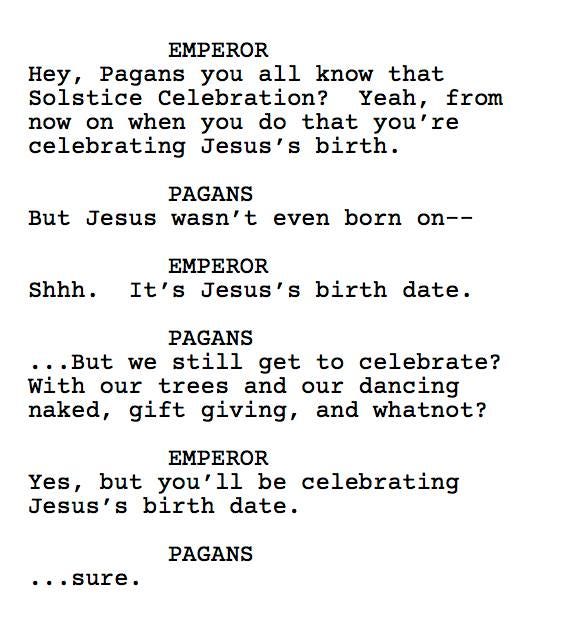
It would appear that nearly 2000 years before the modern “War On Christmas” there was first the “War On The Solistice Celebrations.”
And somehow this ruse stuck, which is how we got the pagan Christmas Trees, and somewhere along the line poets and copywriters gave us Santa Claus, Reindeer, Rudolph, and now the Elf On The Shelf.
I became curious about the mythos of one of the most celebrated holidays in America and so I started digging a little into how all of these Christmas myths and rituals were absorbed into our culture. What you’ll see from here on out in this article is a bit of history of the development of the Christmas Tree. Then I’ll take a deep dive into the Origins of Santa Claus and how that man has changed and been represented throughout the last two centuries.
The War On Christmas Trees

The first time American’s inserted a stick up their you-know-what’s over the invented birth date of Jesus was back in 1659 Massachusetts. The Pilgrim’s second governor, William Bradford, made it his mission to get rid of pagan celebrations on Christmas. He passed a law that made any observance of December 25 that was not in a church a penal offense. People were fined for hanging decorations.
In the grand scheme of history this feels incredibly ironic. If the Solstice was first stolen from the Pagans to celebrate Christmas, Bradford felt that a Pagan symbol or decoration was now stealing the show from Christmas.
The most popular of these pagan symbols was, of course, The Christmas Tree. Some early settlers from Europe had brought with them the Germanic symbols of the solstice that had endured from ancient times: the Evergreen Tree. This tree was celebrated on the Winter Solstice as a reminder that the cold months would be over soon. It was a tree that was able to maintain its color even throughout a harsh winter and so that aspect was also cherished.
Why the distaste for Pagan rituals and symbols? Well, for one thing, a Puritan typically has a distaste for anything that isn’t… pure.
Let’s start with where some of these impure rituals come from.
Saturnalia
Think: The Purge meets A Christmas Carol…

Anceint Romans celebrated a week long solstice festival from December 17–25 to honor the God of Saturn. We don’t know a lot about what craziness went on during these annual festivals but the poet Lucian of Samosata (AD 120–180) gives us a little cliff notes in his poem Saturnalia.
“During my week the serious is barred: no business allowed. Drinking and being drunk, noise and games of dice, appointing of kings and feasting of slaves, singing naked, clapping … an occasional ducking of corked faces in icy water — such are the functions over which I preside.”
Saturnalia may sound inviting to anyone who enjoys a good bender in Vegas. In fact, most Pagan rituals involved a Dothraki level of inhibition and merry-making — (Merry is a word curiously associated with Christmas which I’ll get to a little later).
In addition to the drunken naked caroling, Romans would decorate their homes and temples with evergreen boughs. This was a common trait among vastly different ancient people during the solstice.
Ancient Egyptians celebrated Ra, the sun god, on the Winter Solstice by decorating their homes in Palm Rushes, a symbol of life over death.

Druids similarly decked their temples out with Evergreen boughs. Scandanavians believed that their sun god, Balder, was connected through the evergreen plant.
It’s hard to blame them for being attracted to these kinds of trees. In Winter when every other plant is dying, when the harvest is over, it would make sense to see the Evergreen or Fir trees as immortal, or at least impervious to death, just like their gods. On the longest, darkest night of the year, it would be nice to be reminded that from here on out it will only grow lighter.
But the birthplace of the first official Christmas tree is the subject of a hot debate between Latvia and Estonia. Both countries claim that they had New Year’s festivals where they would decorate and dance around a tree only to burn it to the ground several days later. In 2010 the town of Riga, Latvia claimed the site of the first Christmas Tree.
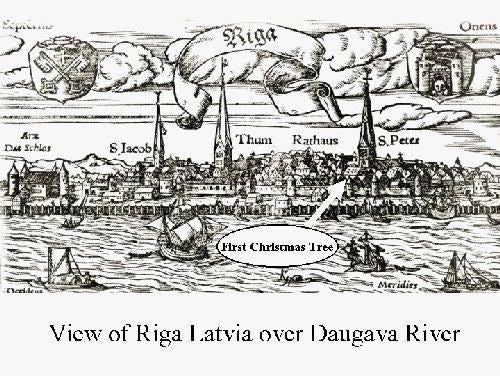
But the town of Tallinn, Estonia calls BS. They believe the festival began in their country.
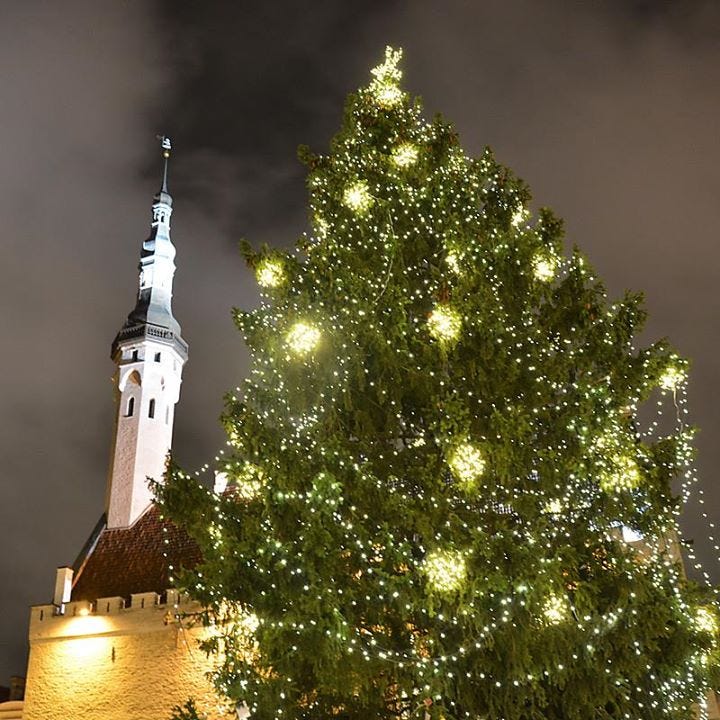
While the two countries duke it out, some historians say that neither country is right. The tree’s relation to Christmas most likely came from the Medieval Mystery Plays that would take place throughout Europe. Those who could not read came out to hear the Bible stories played out on a stage. Many of these plays would contain a tree that represented the Garden Of Eden.
There are some accounts that the tree was used as an advertisement for the Mystery Plays. To announce the plays, the actors would carry the tree throughout the town to summon an audience.
The most famous legend about the first Christmas Tree comes from Germany. The great Protestant Reformer, Martin Luther, was walking through the woods near Wittenberg on a cold December night when he was arrested by the sight of the winter stars shining through the branches of an evergreen tree. He was so awe-struck that he cut the tree down, and brought it home. He set it up in his living room and set candles on the branches in an attempt to recreate the image for his family.
I can imagine Mrs. Luther being none too happy about this —

One way or another this began to catch on in Germany. People started bringing their trees into their homes around Christmas. Despite the Protestant Reformation (more on this later, too) the tradition stayed in Central and Eastern Europe throughout the 16th and 17th centuries.
The Tree tradition came to England in 1761 when Charlotte of Mecklenburg-Strelitz married King George III. While King George was slowly losing his shirt to these guys —
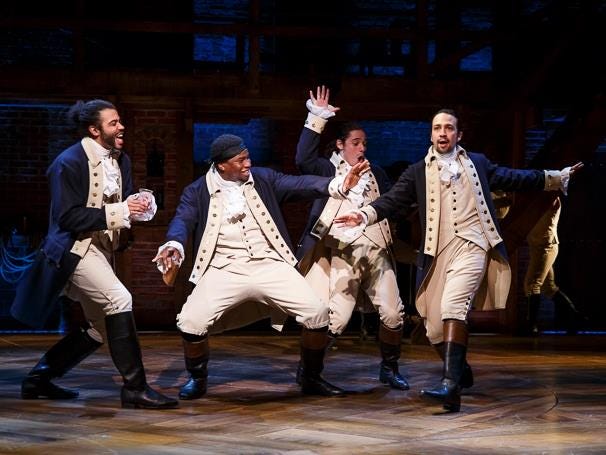
— Queen Charlotte set up the first Christmas Tree in the Windsor Castle. She decorated it with tinsel and glass. She gathered the children from the noble families of Windsor and they took gifts and sweets which hung from the tree branches.
Thereafter, throughout the early 19th century the tradition of a Christmas tree was firmly placed in the upper class society. It didn’t reach the masses until Queen Victoria married German Prince Albert who also brought the custom with him from Germany to England. In 1846 the Illustrated London News sketched a picture of the Queen and Prince Albert standing around their tree with their children.

This sketch was a game changer for the Christmas Tree in England. Once the Christmas Tree was shown to the masses in a London Newspaper everyone wanted to adopt the tradition. It spread quite quickly.
The tradition was adopted slower in America. But less than a century after Queen Victoria and Prince Albert’s Christmas Tree debut, as the Depression was turning its screw across the pond, several construction workers set up a tree in the middle of Rockerfeller Plaza. The construction workers’ wives helped to decorate it. They were hoping that the sight of the tree would help lift people’s spirits. The next year they did it again, only then Mr. Rockerfeller added lights to the tree. And thus began a tradition of the Rockerfeller Tree.
From here the pagan tradition once worthy of penalty from Bradford’s administration was welcomed and embraced by the American family.
The Merry In Christmas
Before I get into the history of Santa I want to talk for a moment about the word “Merry.”
In order to do that I want to start by talking about the word “Happy.” We say Happy Birthday; Happy Easter; Happy Thanksgiving; Happy New Year; Happy Hanukkah.
Why then do we say Merry Christmas?
The word Merry is a combination from the Middle Dutch [mergelijc] which meant “agreeable, pleasant,” and — perhaps more interestingly from the High German [murg] which means “short.”
Short?
Have a Short Christmas?
If we continue to follow the rabbit hole of etymology we find the word Merry has other roots: Sanskrit [muhur] “suddenly”;
Ancient Greek [βραχύς] “short”;
Gothic [maurgian] “to shorten.”
The OED follows this further, that the word meant “that which shortens or whiles away the time.”
There are other definitions of the word which closely associates “Merry” with drunkenness. Might be the egg nog?
The first use of the word in association with Christmas was in 1534 in J. Fischer’s Letters in the Church History of England:
“And thus our Lord send yow a mery Christenmas, and a comfortable, to yowr heart desyer.”
Not too long after this Shakespeare uses the word in Henry VI Part 2 —
“Welcome mery shrouetide.”
“Shroutide” was Shrovetide, the carnival-esq celebration before Lent. Still today celebrated with a racous Football match that some believe started with the kicking of a severed head across a field.
Shakespeare would have certainly known the kind of “merry-making” at Shrovetide, and so his use of the term gives us a window into how people thought of “Merry” and “Christmas.” This is to say carnival-esq, entertaining, perhaps clouded in a fog of drugs, numbed in a way which which makes it fly by in the blink of an eye.
“She’d been drinking too much Egg Nog…” — Grandma Got Run Over By A Reindeer
The War On Santa
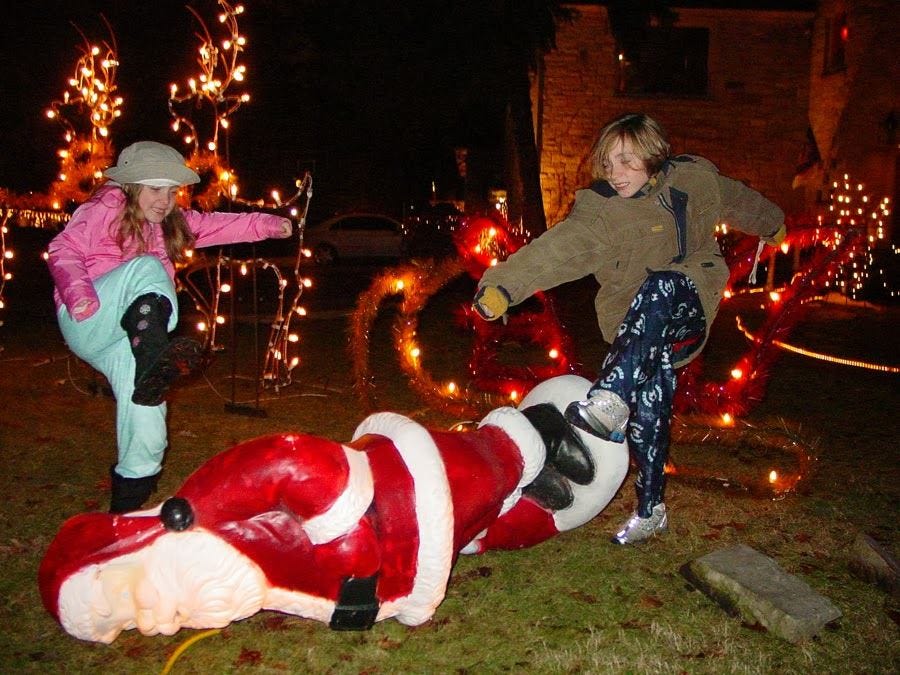
The idea of Santa Claus is another strange myth that has taken some twists and turns throughout history to arrive in its present package today. The myth started from Saint Nicholas in 280 A.D.
Every year on his Feast Day (December 6th) he’d give gifts and treats to poor children. One of his largest claims to his Sainthood was when he visited a poor family that had three young girls, all who were destined to be sold off into slavery. Saint Nicholas gave the father three portions of gold so that each sister could have a dowry and get married rather than submit to slavery.
For centuries after this people carried on the tradition of giving gifts to children and the poor on Saint Nicholas’s Feast Day. This tradition began to coincide well with both the Pagan Winter Solstice Festivals and with the Mass which was held on the 25th to commemorate Jesus’s birth (A Christ-Mass).
But in the 16th century, Martin Luther (yes, the same guy who dragged the tree into his living room in Wittenberg) was challenging the Catholic Church and starting the Protestant Reformation. Marty was a whiz using the new ultra high tech Guttenberg Press which helped get a German-vernacular copy of the Bible into people’s homes. He hoped to get Christianity back to its roots and away from what the Catholic Church had turned the faith into.
With the challenge to the Catholic Church’s Saints, Marty and other reformers denounced the idea of the Saints. In his humble opinion Saints were not to be worshiped nor celebrated. So the tradition of celebrating Saint Nicholas — as nice as he was — went down the tubes. No more gift giving in the name of Saint Nicholas.
The problem was that people liked giving gifts, and especially around Christmas. And so the tradition was changed from celebrating Saint Nicholas to the idea that Baby Jesus was bringing the gifts.
But that myth immediately ran into difficulties. Baby Jesus was…
a baby.
How could he carry the gifts to all the children and the poor? So somehow folklore began perpetuating the idea that Jesus had an old man who helped baby Jesus bring gifts.
This Old Man Helper was not the fat jolly pipe smoking Santa we have today. He was scary and something of a crumudgeon. He was the bad cop to Jesus’s good cop. This Old Scary Man Jesus Helper carried gifts as well as the threat to keep children in line if they were not good, and if they did not say their prayers.
This old man helper took on different identities.
In France they had The Whipfather. The Whipfather would beat children with a stick if they were not good.
Black Peter would apparently stuff children in his sack and take them away if they were not good.
Joseph Stalin originally nixed the entire idea of Jesus’s helper when he created the Soviet Union. But a couple decades into his reign he decided that the people needed something to cheer them up given all the gulags and assassinations. So he gave them a version of Scandinavia’s Ded Moroz, or Grandfather Frost.

And there’s also this strange and familiar lyric…
“there’ll be scary ghost stories, and tales of the glories, of Christmases long long ago.”
Scary Ghost Stories… Perhaps some of these are derivative of the Scary Old Helpers across Europe.
The Dutch, on the other hand, never went along with Martin Luther’s decree to no longer celebrate Saint Nicholas. They kept the tradition of celebrating the Saint through gift giving alive and well. But they did adopt the idea of the gift giver which they called Sinterklauss.
So when the Dutch settled in the Americas they brought this tradition with them — Sinterklauss.
But the real formation for the modern myth which populates our stories, our shopping malls, and songs came from a poet. In 1822 Clement Clarke Moore wrote a poem titled “A Visit From St. Nicholas” for his children. The following year he published the poem anonymously in the Troy Sentinel. The poem is popularly known today as “The Night Before Christmas.”
The poem caught on like wildfire. It appeared again in newsprint, anthologies, and in school books. Because Moore published the poem anonymously other poets tried to take the credit but in 1844 Moore published his collection Poems in which the famous poem appeared. None of the other authorship claims have produced credible evidence.
An oft forgotton detail present in the poem but missing from today’s interpretations is Santa’s size. He describes:
“When what to my wondering eyes did appear / But a minuature sleigh and eight tiny rein-deer / With a little old driver so lively and quick / I knew in a moment he must be St. Nick.”
The narrator of the poem describes St. Nick and his reindeer as miniature, tiny, and little. Later in the poem he describes St. Nick as a “right jolly old elf.”
So when St. Nick was re-invented as a chimney-diving, round-bellied, cherry-nosed, pipe smoking, gift giver the poet who gave birth to the image saw him and his magical cast of deer as small. (Side note on the Reindeer in just a minute).
Then in December of 1866, Thomas Nast, an illustrator for Harper’s Weekly gave us the physical image of what may have been in Moore’s poem. Nast drew scores of depictions of St. Nick in his time at Harper’s. When he first started, this St. Nick was on the Union side of the Civil War.

Nast also gave Santa a place to live. Moore had noted St. Nick’s reindeer. Reindeer are Caribou and native to the Arcitc. In the middle of the 19th century several expeditions to the Arctic had been made and the frozen, remote region of the globe entered popular imaginaiton. Nast drew depictions of Santa living in the North Pole, the workshop where toys were made, and a naughty and nice list.
Finally Santa went full American by taking on a Corporate Sponsor. In 1931 (the same year the Rockerfeller Tree went up) Coca-Cola commissioned Haddon Sundblom to draw Santa in their advertisements. Sundblom drew from Moore’s 100 year old poem and from Nast’s drawings for Harper’s and gave us the final touch of the warm jolly man we know today.
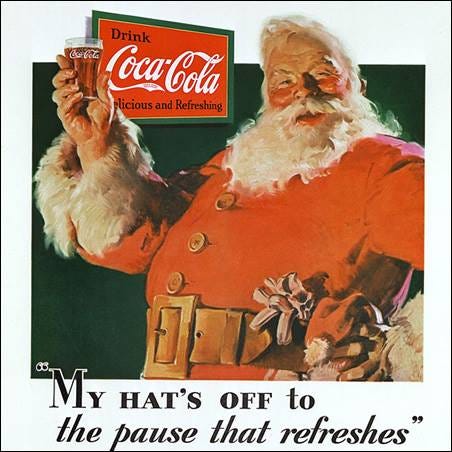
Side Note About Reindeer: They’re Female
It’s extremely likely that all nine of Santa’s reindeer are female. In most every depiction of the Reindeer they are shown with their antlers. Reindeer are one of the few populations of deer where both sexes grow antlers.
The thing is that male reindeer typically shed their antlers in late autumn after the mating season is over. The females keep their antlers year round until they calve.
So, given this, Dasher, Dancer, Prancer, Vixen, Comet, Cupid, Donner, and Blitzen are all biologically female.
Rudolph is often depicted with adolescent antlers or no antlers at all, so Rudolph’s gender is up for debate. Though the story of Rudolph, which was written by Robert May, a copywriter for a Montgomery Ward catalogue, hints that the Rudolph is a male, only a very young one, which would explain the small or missing antlers.
Psychological Problems Associated With Santa, The Last War
Modern day psychologists are warning now that the Santa myth we tell our children may be causing more harm than good. Their argument is that a social humiliation occurs when they discover that their friends knew the truth all along. Furthermore, they’ve argued that it disrupts the trust a child has in their parent when they discover that they’ve been lied to for so long.
Some parents believe the Santa lore helps children with their imagination, but psychologists fight back on this point as well. A belief is different from imagination. It’s one thing to tell your children, “This is the way it is,” and another thing to say, “Let’s think about the possibilities of what it would be like if there were a Santa Claus.”
With the advent of the Elf On The Shelf, and more recently the Jewish Hanukkah spin off, Mensch On A Bench, parents don’t seem to be heeding the advice of the psychologist’s recommendations.
To all a Good Night…
The birth of Christ was deemed a miracle for the Christian faith. But the holiday celebration captivates the imagination across almost every faith, including the agnostic. It has been part of human rituals for the extent of recorded time. The act of giving and celebrating the evergreen branch — hope — on the darkest days of the year may be the real meaning of the holiday, indeed the very spirit which binds our species together. Jesus may even concur.
Whatever you do on this solstice, be it merry and bright.
CJD
Sources
Santa
http://www.history.com/topics/christmas/santa-claus https://news.nationalgeographic.com/news/2013/12/131219-santa-claus-origin-history-christmas-facts-st-nicholas/ https://www.livescience.com/5953-santa-claus-real-man-myth.html https://www.whychristmas.com/customs/fatherchristmas.shtml https://www.fastcompany.com/3066049/convincing-your-kids-santa-is-real-is-bad-for-their-mental-health https://www.psychologytoday.com/blog/plato-pop/201212/say-goodbye-the-santa-claus-lie https://www.snopes.com/2017/11/29/the-war-on-christmas/ https://news.nationalgeographic.com/news/2002/12/1220_021224_rudolph_2.html http://www.coca-cola.co.uk/stories/coca-cola-and-father-christmas-the-sundblom-santa-story http://metrocosm.com/santa-clauses-of-europe/ https://publicdomainreview.org/collections/a-pictorial-history-of-santa-claus/ https://www.poets.org/poetsorg/poet/clement-clarke-moore https://www.poetryfoundation.org/poets/clement-clarke-moore http://mashable.com/2015/12/20/how-to-go-to-the-north-pole/#dDKbai5x1aqz
Trees
http://www.history.com/topics/christmas/history-of-christmas-trees https://www.whychristmas.com/customs/trees.shtml http://www.countryliving.com/life/a45590/christmas-tree-origin/ http://www.christianitytoday.com/history/2008/december/why-do-we-have-christmas-trees.html https://www.zmescience.com/science/history-science/origin-christmas-tree-pagan/ http://www.historytoday.com/alison-barnes/first-christmas-tree https://www.whychristmas.com/customs/25th.shtml https://www.nytimes.com/2016/12/22/world/europe/who-tossed-on-the-first-tinsel-two-baltic-capitals-disagree.html?_r=0
Misc
http://abcnews.go.com/WN/mailform?id=14998335 http://www.telegraph.co.uk/news/uknews/defence/11936179/What-are-the-biggest-defence-budgets-in-the-world.html
https://www.britannica.com/topic/Saturnalia-Roman-festival http://www.historytoday.com/matt-salusbury/did-romans-invent-christmas